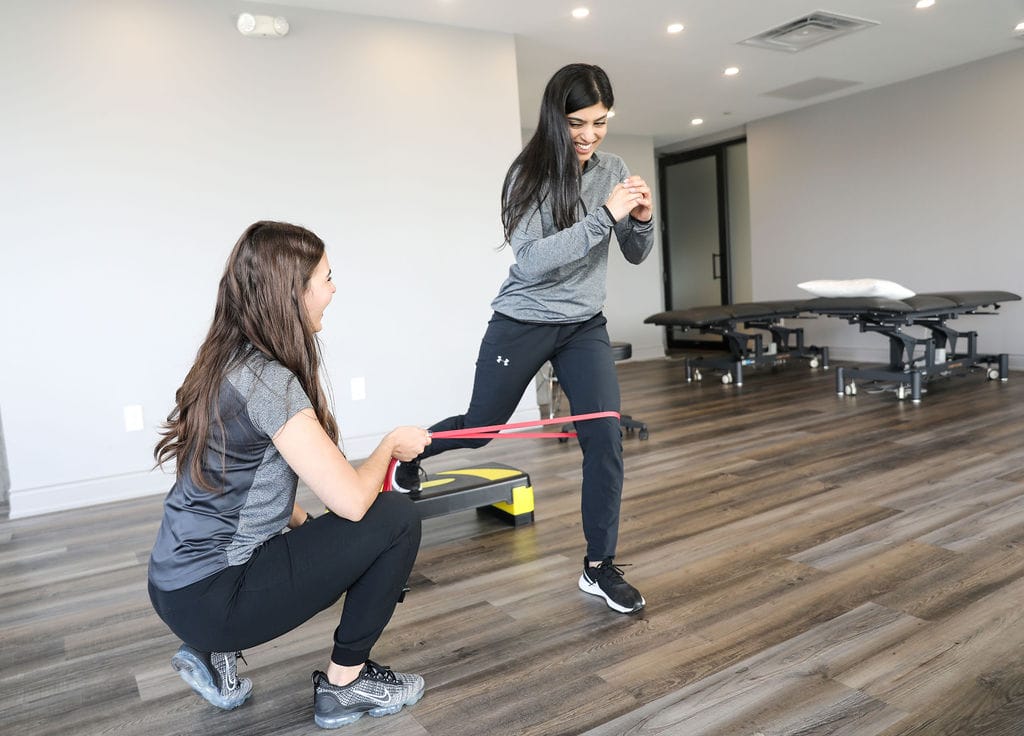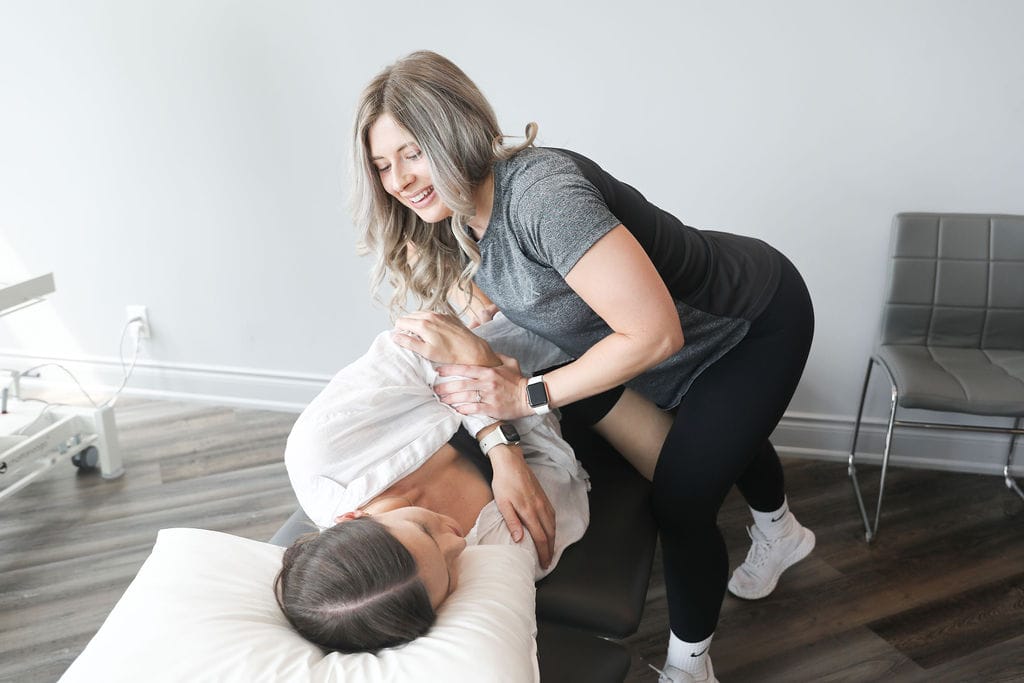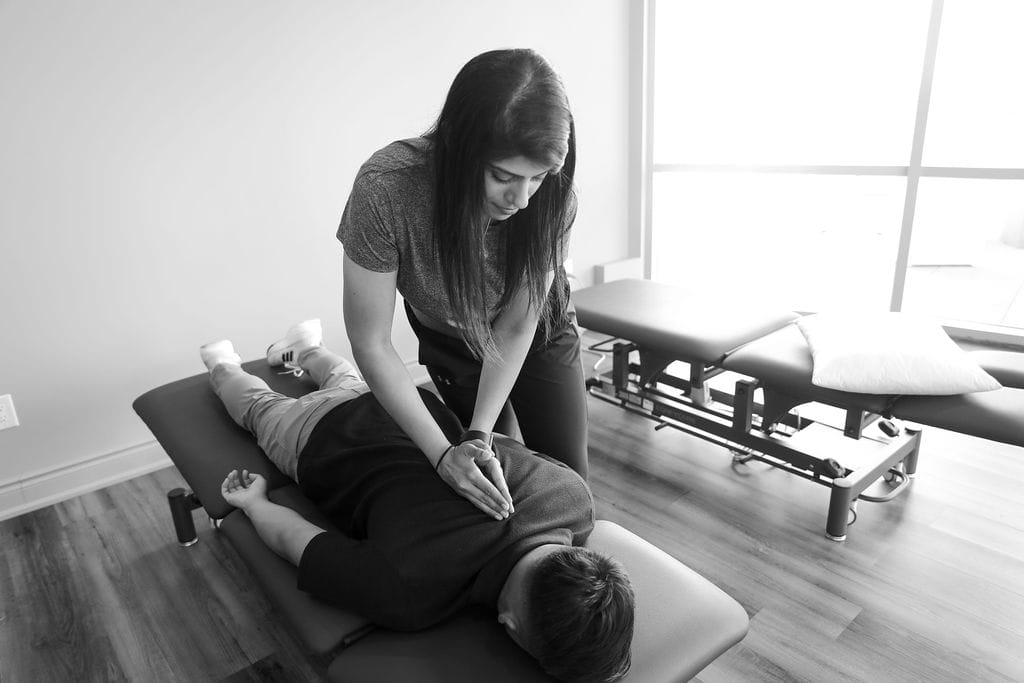Chronic lower back pain can creep into every part of your life – from how you sit, stand, and sleep, to how you work or play with your kids. If you’re tired of short-term fixes or masking pain with medication, it’s time to consider a smarter, long-term solution.
At Triangle Physiotherapy, we specialize in progressive exercise programs that help you regain strength, reduce pain, and return to the life you love. Our clinics across Toronto and the GTA are equipped to guide you through every stage of recovery – with care that’s tailored to you.
Movement Over Medication
Contrary to old beliefs, prolonged rest isn’t the answer for chronic lower back pain. In fact, too much rest can actually make things worse. At Triangle Physiotherapy, we take an evidence-based approach that focuses on safe, structured movement to help manage and reduce pain.
Our progressive physiotherapy programs are designed to meet you where you are, then gradually increase in complexity as your body adapts and strengthens.
What Does “Progressive” Really Mean?
Progressive doesn’t mean pushing you beyond your limits. It means building up your resilience safely and sustainably.
At Triangle Physiotherapy, each program begins with a thorough assessment to understand:
- The underlying cause of your back pain
- Your current mobility, strength, and posture
- Activities or habits that may be contributing to discomfort
With this knowledge, we create a customized, evolving plan that aligns with your goals – whether that’s returning to work pain-free, playing sports again, or simply walking without discomfort.
Key Elements of Triangle Physiotherapy’s Back Pain Programs
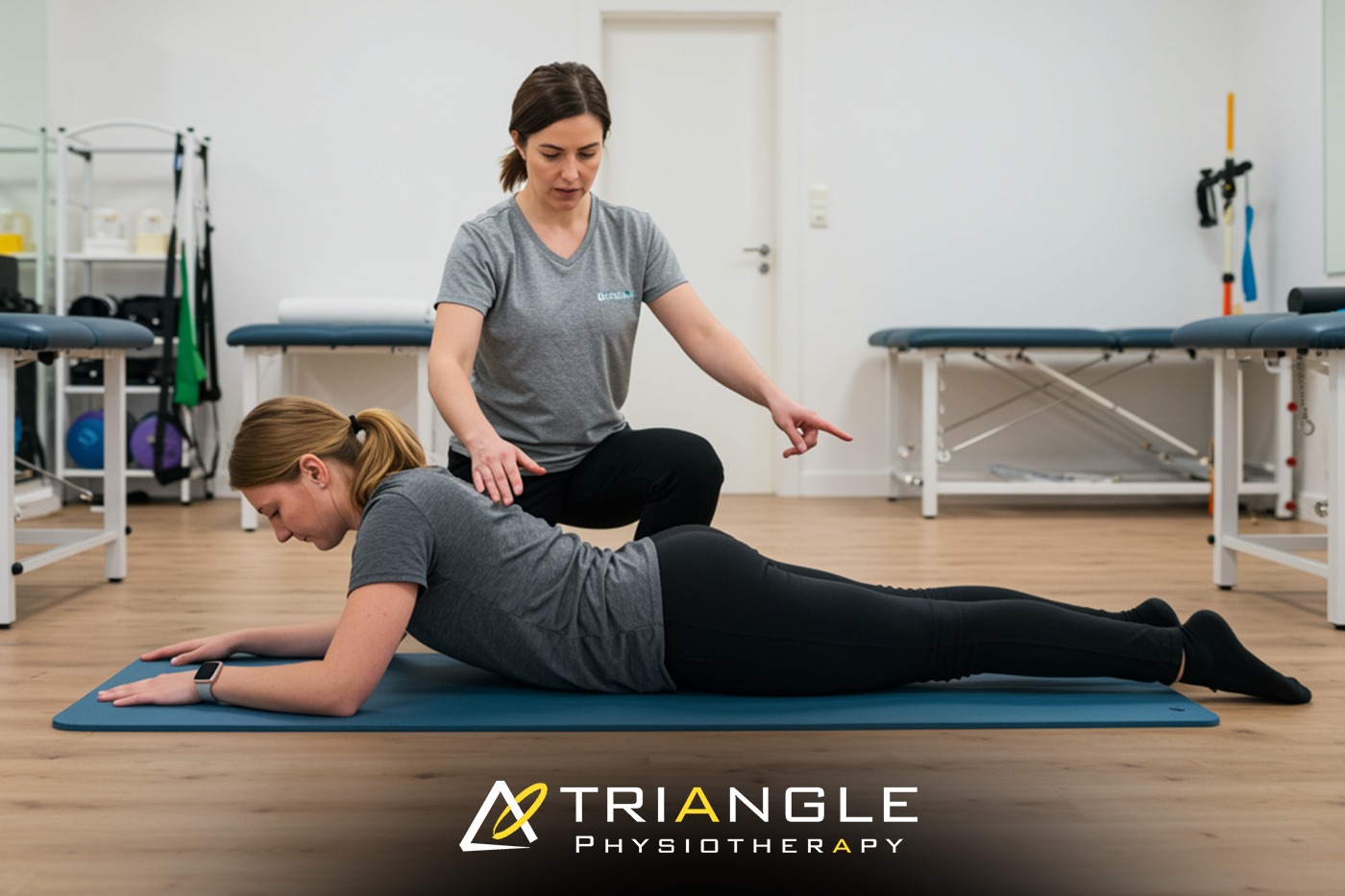
Core Stabilization
Weak core muscles often lead to poor spinal support. We target deep stabilizers to create a solid foundation for everyday movement.
Mobility & Flexibility Training
Many cases of lower back pain are tied to stiff hips, hamstrings, or lumbar joints. Our therapists guide you through gentle mobility work to restore range of motion.
Postural Re-Education
Daily habits like slouching at a desk or poor lifting form can lead to chronic issues. At Triangle Physiotherapy, we’ll help retrain your posture for real-world scenarios.
Strength Progressions
Starting with bodyweight and advancing to resistance training, our exercises are scaled to your tolerance and always supervised by experienced physiotherapists.
Pain Education & Self-Care Strategies
Understanding your pain is part of healing. We equip you with knowledge and home strategies so you feel confident managing symptoms between sessions.
Does Chronic Really Mean Forever?
Not at all. Many of our patients at Triangle Physiotherapy once thought they’d “just have to live with it.” But with consistent care and a customized approach, lasting relief is more than possible – it’s expected.
One Step at a Time – with the Right Support
At Triangle Physiotherapy, you’re not just a file or an injury. You’re a person on a journey. We’ll walk alongside you with empathy, encouragement, and a plan that grows with your progress.
If you’re searching for trusted, patient-centred physiotherapy in Toronto, our team is ready to help you move – and live – better.
📍 Serving communities across Toronto & the GTA
🏥 Book your assessment today at Triangle Physiotherapy and take the first step toward a stronger back and a more active life.
Chronic back pain is more than an inconvenience – it can limit your movement, affect your posture, disrupt your sleep, and reduce your quality of life. In a fast-paced city like Toronto, where long commutes, desk jobs, and busy schedules are common, chronic back issues affect people across all age groups.
At Triangle Physiotherapy Toronto, our experienced team offers specialized care for chronic back pain physiotherapy in Toronto, helping clients get to the root of their discomfort and build long-term recovery strategies. Here’s how we approach treatment, timelines, and personalized care pathways.
What Is Chronic Back Pain?
Chronic back pain is pain that persists for 12 weeks or more, even after an initial injury or condition has healed. It may feel like:
- A persistent ache in the lower or middle back
- Sharp, shooting pain during movement or lifting
- Tightness or stiffness after long periods of sitting or rest
- Radiating pain down into the legs or hips
Common causes include herniated discs, poor posture, spinal degeneration, previous injuries, or muscle imbalances. Each individual experiences it differently, which is why a tailored physiotherapy plan is so important.
Our Approach to Chronic Back Pain Physiotherapy in Toronto
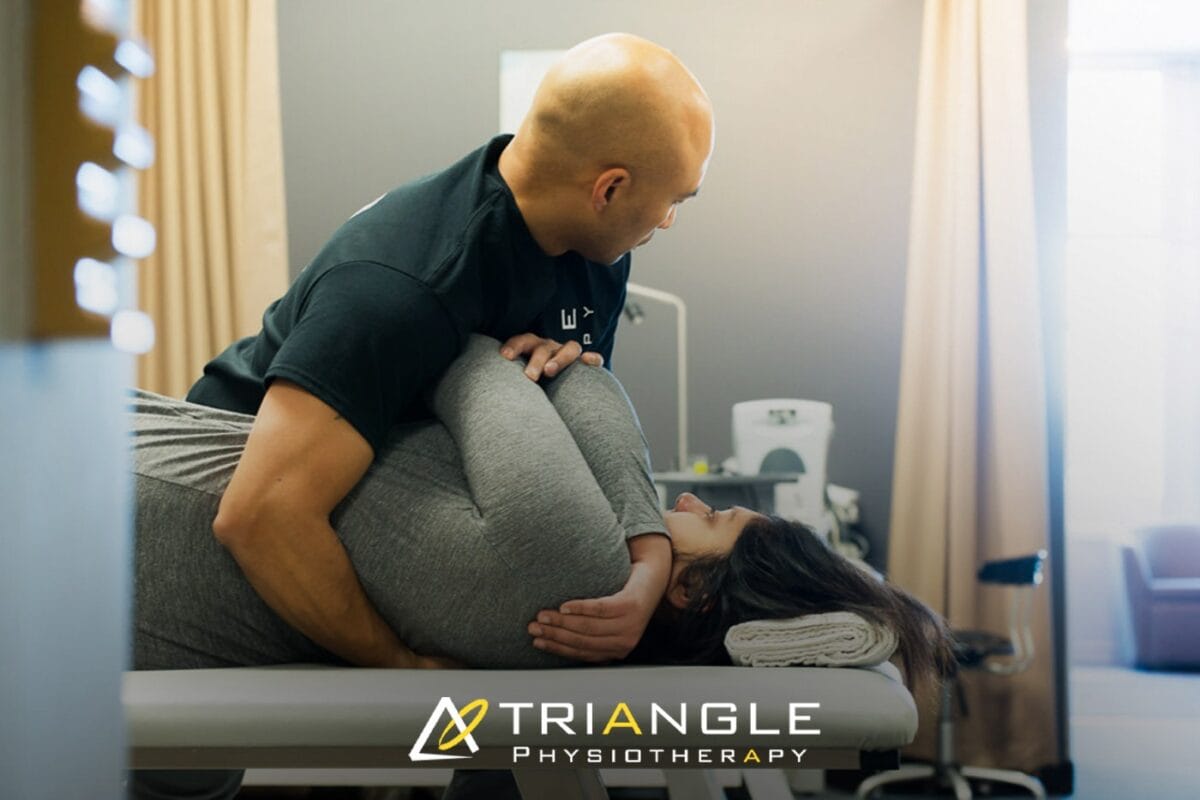
1. In-Depth Assessment
We begin with a thorough assessment at our Toronto clinic. This includes reviewing your medical history, lifestyle factors (like work habits and posture), and physical tests to understand how your back moves and where restrictions or weaknesses lie.
2. Personalized Treatment Plan
Based on our findings, your physiotherapist will develop a custom treatment plan to address your specific type of chronic back pain. This may include:
- Manual therapy and spinal mobilization
- IMS
- Core and back-strengthening exercises
- Postural correction and ergonomic advice
- Pain-relief modalities
- Functional training to improve everyday movement
At Triangle Physiotherapy Toronto, every plan is adjusted to your body, goals, and schedule.
Recovery Timeline: What to Expect
While every case of chronic back pain is unique, here are some general timelines:
- Mild to moderate pain: Noticeable improvements within 4–6 sessions
- Long-term or recurring pain: 8–12+ weeks of consistent therapy, with follow-up care
We track progress closely and modify your treatment plan as needed to ensure steady, meaningful improvement.
Life After Treatment: Long-Term Pain Management
Our focus isn’t just on short-term relief – it’s about long-term results. Once your pain decreases and mobility improves, we help you:
- Build a home-based strength and mobility program
- Adjust workplace and lifestyle habits to reduce strain
- Stay active safely with expert guidance
For continued care, we also offer massage therapy, chiropractic therapy, and fitness support within our Toronto location.
Why Choose Triangle Physiotherapy Toronto?
We combine clinical expertise with a personal approach to care. Our physiotherapists understand the demands of city living and work with you to make recovery achievable and stress-free. Conveniently located and committed to results, Triangle Physiotherapy Toronto is your trusted destination for chronic back pain physiotherapy in Toronto.
At Triangle Physiotherapy, we believe in offering comprehensive care that addresses the root causes of pain and discomfort, not just the symptoms. One of the key components of our holistic approach to rehabilitation and wellness is chiropractic care. Chiropractic treatments can be incredibly effective for a range of musculoskeletal issues, from back pain to headaches and joint stiffness. By integrating chiropractic care with physiotherapy, we provide a multidimensional approach to improve mobility, reduce pain, and enhance your overall quality of life.
What is Chiropractic Care?
Chiropractic care is a non-invasive form of treatment that focuses on diagnosing and managing musculoskeletal disorders, particularly those involving the spine. Chiropractors primarily work with spinal manipulation (also known as spinal adjustments) to correct misalignments in the spine and improve the function of the nervous system. By restoring proper alignment to the spine and joints, chiropractic care can help alleviate pain, improve mobility, and reduce inflammation.
While spinal adjustments are the cornerstone of chiropractic treatment, chiropractors at Triangle Physiotherapy also use a variety of other techniques such as soft tissue therapy, postural correction, and lifestyle education. The goal is to restore function, relieve pain, and optimize the body’s natural ability to heal itself.
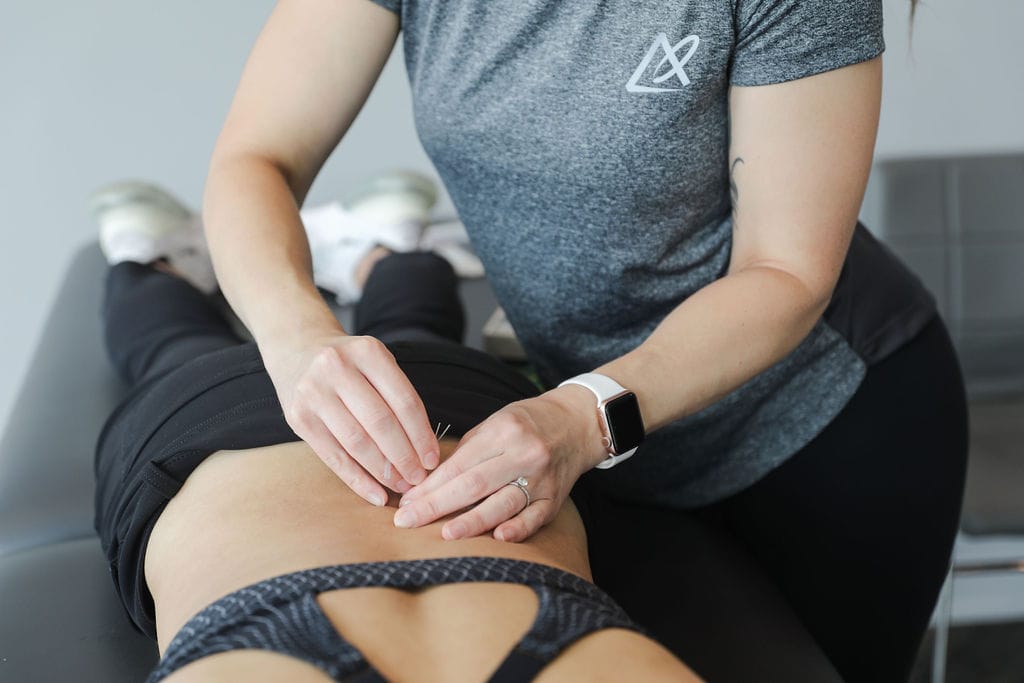
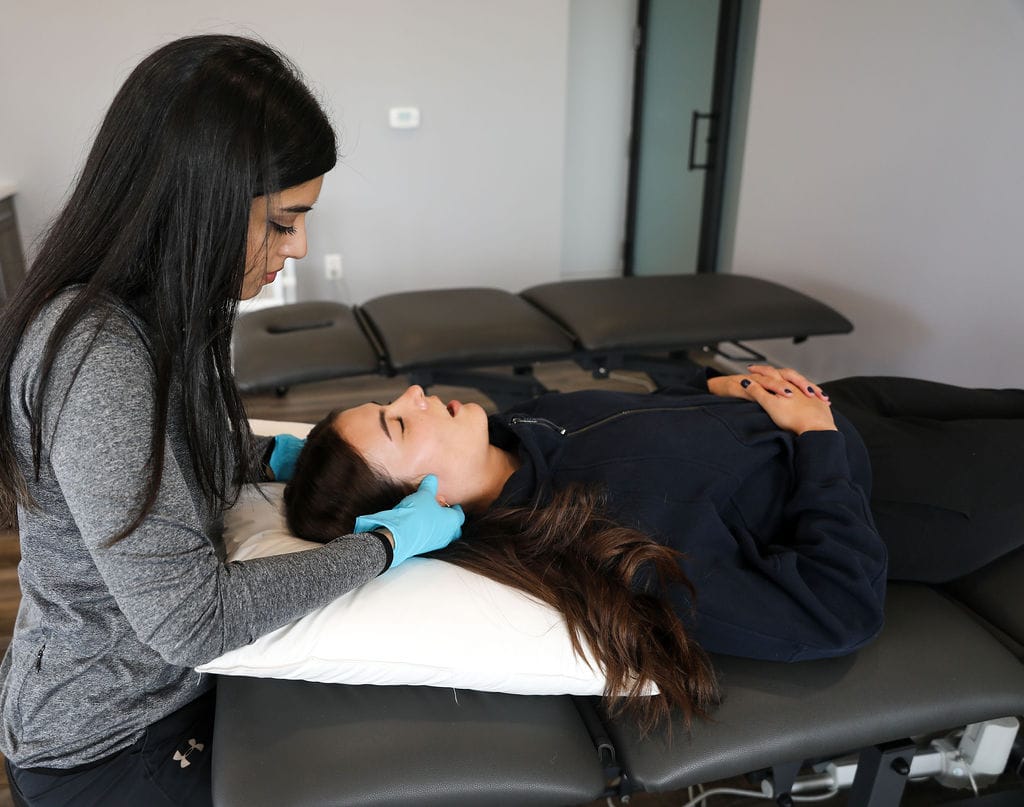
The Role of Chiropractic Care in Your Wellness Journey
Chiropractic care at Triangle Physiotherapy is personalized to address your unique needs. Whether you’re dealing with acute pain from an injury, chronic conditions, or just looking to improve your overall mobility, chiropractic treatment can provide significant benefits. Here’s how chiropractic care can support your health and well-being:
1. Pain Relief and Improved Function
One of the primary reasons people seek chiropractic care is to find relief from pain, particularly in the back, neck, and joints. Spinal misalignments or subluxations can lead to pain, stiffness, and restricted movement. Chiropractic adjustments work to realign the spine and other joints, reducing pain, improving range of motion, and promoting better movement patterns. Many of our patients experience immediate relief from conditions such as sciatica, herniated discs, and whiplash.
Chiropractic care can also address issues with joint function in areas like the shoulders, hips, and knees. By improving joint mobility, chiropractic adjustments help alleviate discomfort caused by conditions such as arthritis, tendonitis, or muscle strains.
2. Headaches
Headaches, particularly tension headaches and migraines, are common complaints that can significantly impact daily life. Often, these types of headaches are triggered by muscle tension or misalignments in the neck and upper spine. Chiropractic care can address these issues by restoring proper alignment to the cervical spine, which can relieve pressure on nerves and muscles, reduce inflammation, and improve blood flow to the brain. Many patients report fewer and less severe headaches after incorporating chiropractic care into their wellness routine.
3. Sports Injury Rehabilitation
Whether you’re an athlete recovering from an injury or simply someone who enjoys staying active, chiropractic care can help speed up recovery and improve performance. Sports injuries, especially those related to the spine or joints, can be effectively treated with chiropractic adjustments, soft tissue techniques, and rehabilitative exercises. By restoring proper alignment and function, chiropractic care helps promote faster healing, reduce inflammation, and prevent future injuries.
Chiropractors at Triangle Physiotherapy work closely with physiotherapists to provide a combined approach to sports injury rehabilitation. This collaborative effort ensures that all aspects of recovery—pain management, mobility, strength, and flexibility—are addressed.
4. Postural Correction and Alignment
Over time, poor posture—whether from sitting at a desk, using electronic devices, or incorrect movement patterns—can lead to imbalances in the spine and musculoskeletal system. Misalignments in the spine can cause tension, discomfort, and long-term structural damage. Chiropractic care can help restore proper alignment, reduce tension, and improve overall posture.
At Triangle Physiotherapy, we provide postural assessments to identify areas where alignment may be contributing to pain or dysfunction. Chiropractic care, combined with physiotherapy exercises, can help improve posture and reduce the strain on the spine, shoulders, and neck. This, in turn, can lead to better movement, less discomfort, and improved overall health.
5. Stress Reduction and Relaxation
Chronic stress can take a toll on your body, causing muscle tension, headaches, and poor sleep. Chiropractic adjustments can help alleviate the physical effects of stress by reducing muscle tightness and promoting relaxation. By improving the function of the nervous system, chiropractic care can help the body respond more effectively to stress and tension. Many patients report feeling more relaxed and balanced after chiropractic treatments.
Integrating Chiropractic Care with Physiotherapy
At Triangle Physiotherapy, we offer a holistic, integrated approach to treatment. Our chiropractors and physiotherapists work together to create a comprehensive treatment plan that addresses your specific needs. While chiropractic care focuses on spinal and joint alignment, physiotherapy can complement this by strengthening muscles, improving flexibility, and providing rehabilitation exercises to support long-term recovery and injury prevention.
By combining chiropractic care with physiotherapy, we ensure that both the structure and function of your body are optimized for improved movement, reduced pain, and enhanced quality of life.
The Benefits of Chiropractic Care at Triangle Physiotherapy
- Personalized treatment plans tailored to your specific needs and goals.
- Non-invasive approach to pain relief, injury recovery, and overall wellness.
- Collaborative care that integrates chiropractic treatment with physiotherapy for maximum results.
- Long-term pain management for chronic conditions such as arthritis, back pain, and headaches.
- Posture correction and alignment strategies to prevent future injuries.
Chiropractic care is a powerful tool for improving mobility, relieving pain, and promoting overall wellness. At Triangle Physiotherapy, our experienced chiropractors work alongside our physiotherapy team to provide a comprehensive, personalized approach to your health. Whether you’re managing chronic pain, recovering from an injury, or simply looking to enhance your physical well-being, chiropractic care can help you achieve lasting results.
Key Takeaways:
- Chiropractic care addresses pain, injury, and dysfunction by restoring spinal and joint alignment.
- It can provide relief from conditions like back pain, headaches, and sports injuries.
- Combining chiropractic care with physiotherapy enhances recovery, mobility, and overall wellness.
- Regular chiropractic care promotes long-term health and injury prevention.
If you’re looking for an effective, non-invasive way to improve your health, reduce pain, and enhance your mobility, chiropractic care at Triangle Physiotherapy may be the solution you need. Contact us today to learn how we can help you feel your best!
Back pain is a common complaint affecting people of all ages and lifestyles. It can range from a mild, nagging ache to severe pain that hinders daily activities. Understanding the causes and treatments for back pain is crucial for maintaining a healthy and active lifestyle. One of the most effective treatments for back pain is physiotherapy, which offers a holistic approach to pain management and recovery.
Causes of Back Pain
- Poor Posture: Sitting or standing improperly for prolonged periods can strain the back muscles and spine.
- Injury: Accidents, falls, or sports injuries can cause acute back pain.
- Muscle Strain: Overuse or sudden movements can lead to muscle or ligament strains.
- Herniated Disc: This occurs when the soft tissue inside a disc pushes out, irritating nearby nerves.
- Arthritis: Conditions like osteoarthritis can cause the space around the spinal cord to narrow, leading to back pain.
- Medical Conditions: Diseases such as scoliosis, osteoporosis, or kidney problems can also result in back pain.
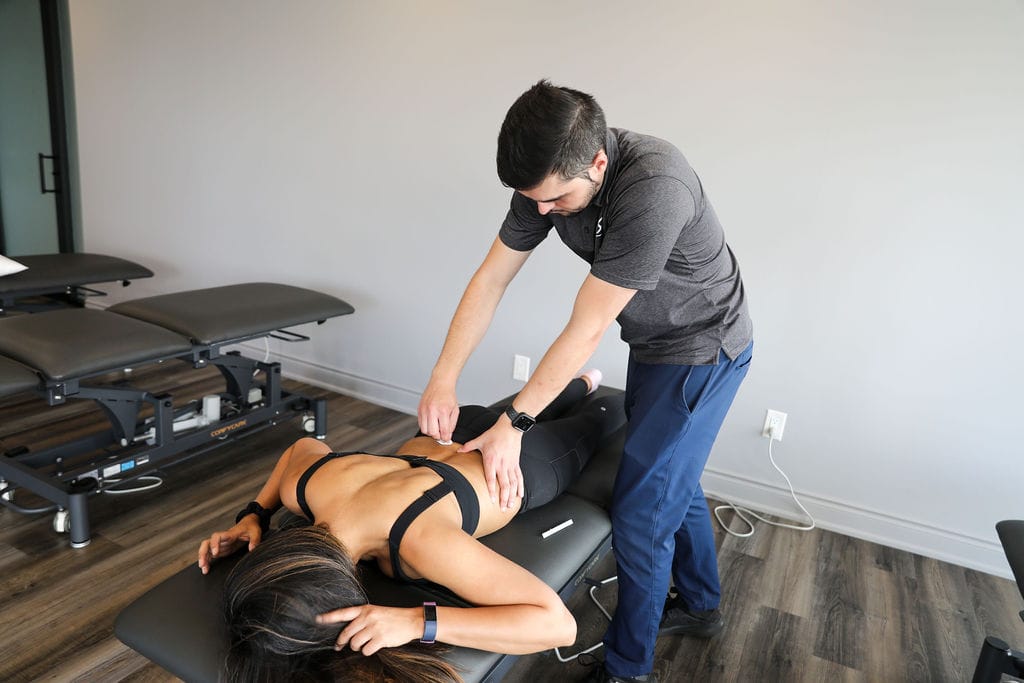
Back pain can be attributed to various factors, including:
How Physiotherapy Helps
Physiotherapy is a non-invasive treatment that addresses the root causes of back pain through a variety of techniques. Here’s how physiotherapy can be beneficial:
- Pain Relief: Physiotherapists use manual therapy techniques, such as massage and mobilization, to alleviate pain and reduce muscle tension.
- Improving Mobility: Through targeted exercises, physiotherapy helps improve the range of motion and flexibility of the spine and surrounding muscles.
- Strengthening Muscles: A customized exercise regimen strengthens the core muscles that support the spine, reducing the risk of future injuries.
- Posture Correction: Physiotherapists assess and correct posture, teaching patients how to maintain proper alignment to prevent strain.
- Education and Advice: Patients learn about body mechanics and ergonomics, empowering them to make lifestyle changes that support back health.
- Prevention: Regular physiotherapy sessions can help identify potential issues early, preventing the progression of back pain.
Common Physiotherapy Techniques for Back Pain
- Manual Therapy: Includes hands-on techniques to manipulate joints and soft tissues, improving mobility and reducing pain.
- Exercise Therapy: Tailored exercises aimed at strengthening, stretching, and stabilizing the back muscles.
- Electrotherapy: Uses electrical currents to reduce pain and inflammation.
- Heat and Cold Therapy: Applying heat or cold packs to alleviate pain and reduce swelling.
- Education and Advice: Providing patients with knowledge on posture, ergonomics, and activity modification to prevent back pain recurrence.
The Road to Recovery
The journey to recovery with physiotherapy involves several steps:
- Assessment: A thorough evaluation of the patient’s medical history, pain intensity, and physical condition.
- Treatment Plan: Development of a personalized treatment plan based on the assessment.
- Regular Sessions: Consistent physiotherapy sessions to implement the treatment plan and monitor progress.
- Home Exercises: Patients are given exercises to perform at home to complement in-clinic treatments.
- Follow-Up: Regular follow-ups to adjust the treatment plan as needed and ensure long-term success.
Conclusion
Back pain can significantly impact the quality of life, but physiotherapy offers a comprehensive and effective solution. By addressing the underlying causes and promoting healthy practices, physiotherapy helps individuals recover from back pain and prevent its recurrence. If you’re struggling with back pain, consider consulting a physiotherapist to embark on a path toward relief and improved well-being.
Click here to book an appointment for back pain treatment with a physiotherapist at one of our eight locations.
- Physiotherapy Etobicoke – Triangle Physiotherapy Etobicoke
- Oakville Physiotherapy Clinic – Triangle Physiotherapy Oakville
- Physiotherapy North York – Triangle Physiotherapy North York
- Mississauga Physiotherapy Clinics – Triangle Physiotherapy Mississauga
- Downtown Physiotherapy Clinics – Triangle Physiotherapy King West
- Uptown Physiotherapy Clinics – Triangle Physiotherapy Lawrence Park
- Physiotherapy Clinic Downtown Toronto – Triangle Physiotherapy Queens Quay
- Physiotherapy Clinics Mississauga – Triangle Physiotherapy Erin Mills
“Back pain can significantly impact your quality of life, but with the right physiotherapy care, you can find relief and restore function. Triangle Physiotherapy is available across the GTA, offering expert services at Physiotherapy in Etobicoke, Oakville, North York, Toronto, Lawrence Park, Queens Quay, Erin Mills, Mississauga, and Liberty Village. Our skilled team is dedicated to helping you manage and overcome back pain effectively.”
Physiotherapy and chiropractic care are both forms of manual therapy that focus on the treatment of musculoskeletal issues, but they have different approaches, philosophies, and techniques. Here’s a comparison of the two:
Physiotherapy
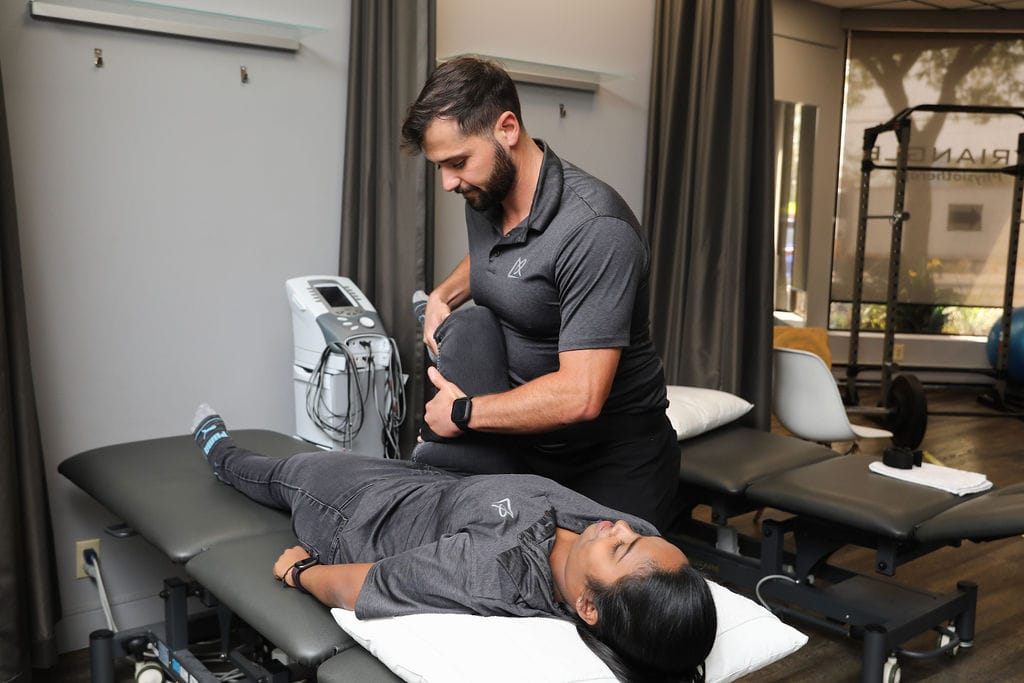
Approach:
- Holistic and comprehensive treatment aimed at restoring movement and function.
- Utilizes evidence-based practices.
Philosophy:
- Focuses on the body as a whole and treats a wide range of conditions, including musculoskeletal, neurological, and cardiovascular issues.
- Emphasizes rehabilitation, prevention, and overall well-being.
Techniques:
- Exercises and stretches to improve mobility and strength.
- Manual therapy, including massage and mobilization of joints.
- Electrotherapy, ultrasound, and other modalities for pain relief and inflammation reduction.
- Education and advice on posture, ergonomics, and lifestyle changes.
Conditions Treated:
- Musculoskeletal pain (e.g., back, neck, shoulder).
- Post-operative rehabilitation.
- Sports injuries.
- Pelvic Health
- Cancer Rehab
- Vestibular Conditions
- Neurological disorders (e.g., stroke, Parkinson’s disease).
- Chronic conditions (e.g., arthritis).
Qualifications:
- Requires a degree in physiotherapy and registration with provincial regulatory body.
- Involves extensive training in anatomy, physiology, and pathology.
Chiropractic
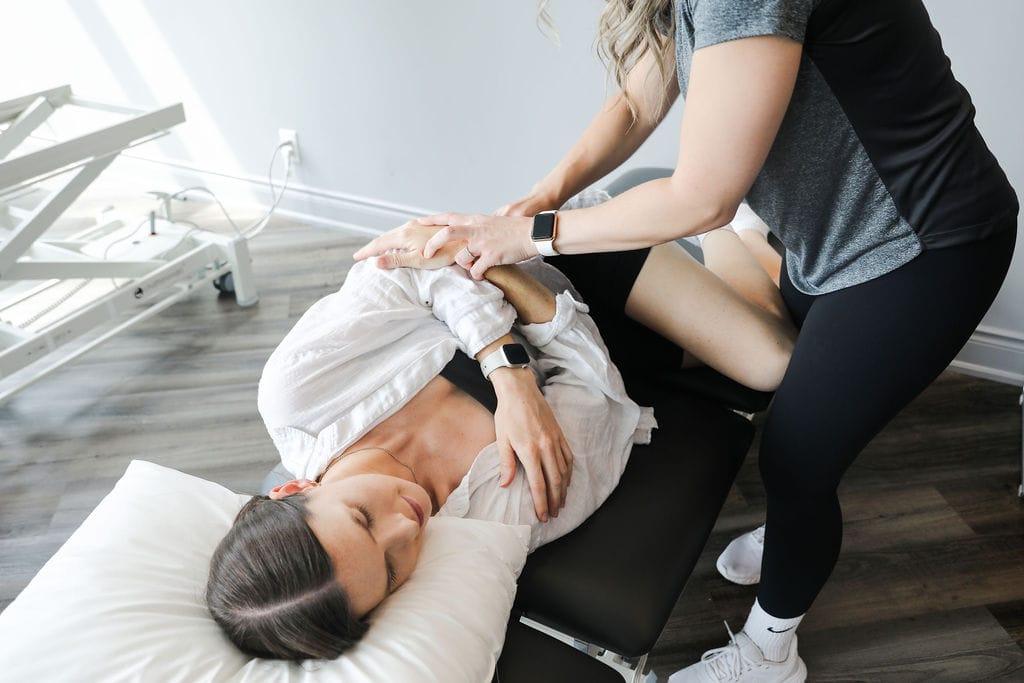
Approach:
- Primarily focuses on the diagnosis and treatment of mechanical disorders of the spine.
- Utilizes spinal adjustments and manipulations.
Philosophy:
- Based on the principle that spinal health affects overall health and well-being.
- Emphasizes the relationship between the spine and nervous system.
Techniques:
- Spinal manipulations and adjustments to restore joint function and support the nervous system.
- Manual adjustments often performed with a high-velocity thrust.
- May include advice on exercise, diet, and lifestyle.
Conditions Treated:
- Back and neck pain.
- Headaches and migraines.
- Joint pain (e.g., hips, knees).
- Sciatica and other nerve-related issues.
Qualifications:
- Requires a Doctor of Chiropractic (DC) degree and registration with provincial regulatory body.
- Involves training in anatomy, physiology, and specialized chiropractic techniques.
Key Differences between Physiotherapy and Chiropractic
- Scope of Practice:
- Physiotherapists: Treat a broader range of conditions affecting various body systems.
- Chiropractors: Primarily focus on spinal health and its impact on overall health but can also treat other musculoskeletal conditions.
- Techniques Used:
- Physiotherapists: Employ a wide variety of techniques including exercise, manual therapy, and electrotherapy.
- Chiropractors: Primarily use spinal adjustments and manipulations but are also trained in treating other joints.
- Philosophical Focus:
- Physiotherapists: Emphasize holistic rehabilitation and prevention.
- Chiropractors: Emphasize the importance of spinal alignment for overall health.
- Educational Path:
- Physiotherapists: Typically require a Bachelor’s or Master’s degree in physiotherapy.
- Chiropractors: Require a Doctor of Chiropractic degree.
When to Choose Each
- Physiotherapy: Suitable for a wide range of conditions, particularly when rehabilitation, exercise, and a holistic approach are needed.
- Chiropractic Care: Beneficial for conditions specifically related to spinal health and when spinal adjustments are indicated.
Ultimately, the choice between physiotherapy and chiropractic care may depend on the specific condition being treated, the patient’s preferences, and the recommendations of healthcare professionals. In some cases, a combination of both therapies might be the most effective approach.
Click here to book an appointment with a physiotherapist or chiropractor at one of our eight locations.
- Physiotherapy Etobicoke – Triangle Physiotherapy Etobicoke
- Oakville Physiotherapy Clinic – Triangle Physiotherapy Oakville
- Physiotherapy North York – Triangle Physiotherapy North York
- Mississauga Physiotherapy Clinics – Triangle Physiotherapy Mississauga
- Downtown Physiotherapy Clinics – Triangle Physiotherapy King West
- Uptown Physiotherapy Clinics – Triangle Physiotherapy Lawrence Park
- Physiotherapy Clinic Downtown Toronto – Triangle Physiotherapy Queens Quay
- Physiotherapy Clinics Mississauga – Triangle Physiotherapy Erin Mills
Deciding between physiotherapy and chiropractic care depends on your specific needs and conditions. Both can offer significant benefits for pain management and overall health. If you are considering physiotherapy in Etobicoke, Oakville, North York, Toronto, Lawrence Park, Queens Quay, Erin Mills, Mississauga, or Liberty Village, there are expert physiotherapists available to guide you toward the best treatment approach for your unique situation.
What is the difference between a physiotherapist, massage therapist, and chiropractor?
Which practitioner is the best to see?
This is one of the most common questions that we get asked! Let’s dive in and learn more about how each of these practitioners can make a difference to your health.
What are the similarities between physiotherapists, massage therapists, and chiropractors?
- They treat musculoskeletal conditions – soft tissue (muscles, ligaments, tendons), bones, or the nervous system.
- All three are regulated professions – you cannot call yourself an RMT, chiropractor, or physiotherapist unless you are registered with their regulatory College.
- They all have specialized training – Physiotherapists at a recognized university, Chiropractors at a recognized Chiropractic College, and RMTs at a recognized Massage therapy course.
- All three have to pass exams administered by their regulatory board.
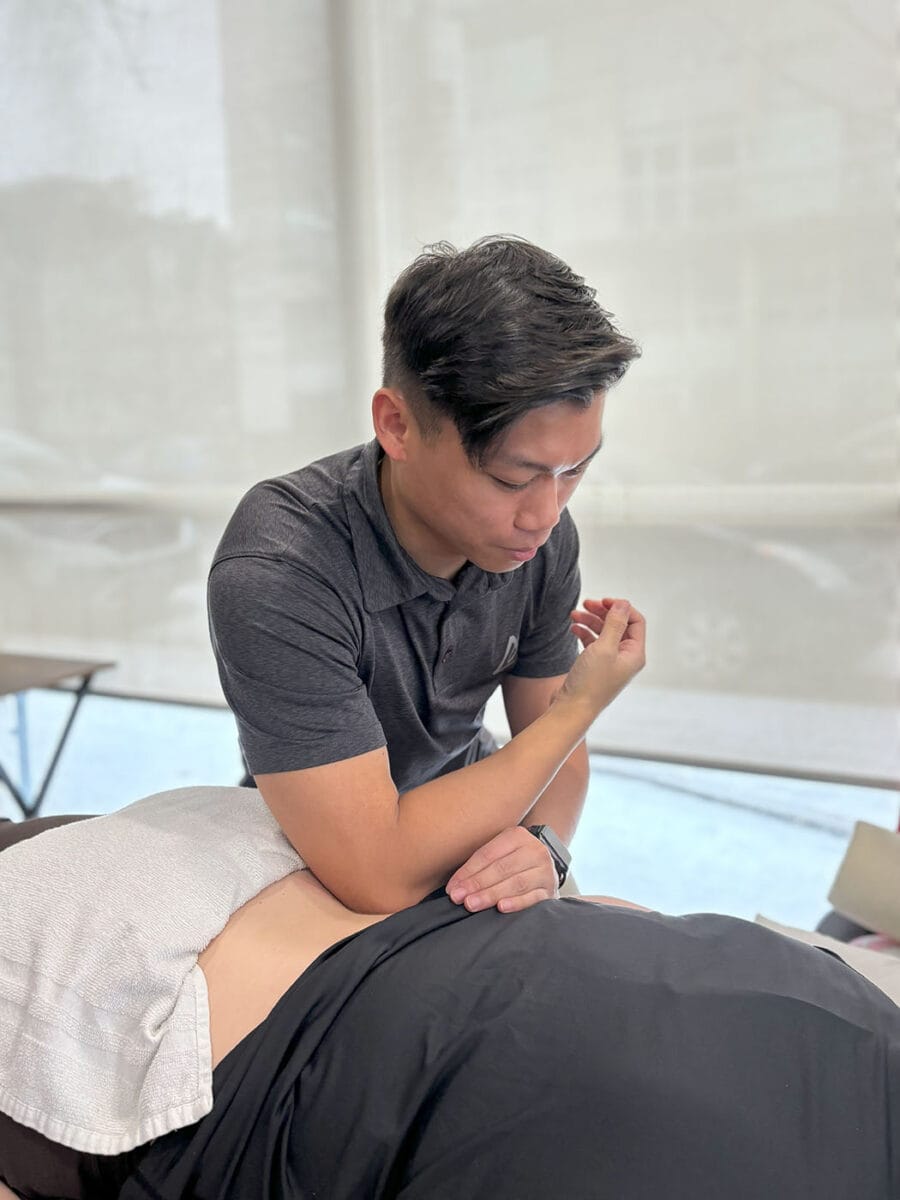
What does a Chiropractor do?
Chiropractic is a licensed healthcare profession that emphasizes the body’s ability to heal itself. Treatment typically involves manual therapy, often including spinal manipulation which helps restore joint function.
What does an RMT do?
An RMT, or Registered Massage Therapist, is a licensed healthcare professional who specializes in providing therapeutic massage treatments. They are trained to assess and treat various musculoskeletal conditions and injuries using hands-on techniques to manipulate muscles, tendons, ligaments, and other soft tissues of the body.
What does a physiotherapist do?
You should consider seeing a physiotherapist when you’re experiencing pain or discomfort, or have mobility issues that affect your daily activities and quality of life. Physiotherapists are healthcare professionals trained to diagnose and treat a wide range of musculoskeletal and movement-related conditions. They can also help with vestibular rehabilitation and pelvic health issues.
Physiotherapists can look at alignment but they also test joint mobility, muscle strength, muscle flexibility, nerve function, posture, and movement patterns. They restore movement and improve pain predominantly through exercise rehabilitation, postural re-training, and lifestyle advice, but also use hands-on techniques.
Can I see all three of these practitioners?
Absolutely! All three practitioners work collaboratively to get you the best possible outcomes and help you reach your health goals.
How do I book an appointment at a Triangle Physiotherapy Clinic near me?
Click HERE to book an appointment with a physiotherapist, RMT or chiropractor at one of our eight locations.
- Physiotherapy Etobicoke – Triangle Physiotherapy Etobicoke
- Oakville Physiotherapy Clinic – Triangle Physiotherapy Oakville
- Physiotherapy North York – Triangle Physiotherapy North York
- Mississauga Physiotherapy Clinics – Triangle Physiotherapy Mississauga
- Downtown Physiotherapy Clinics – Triangle Physiotherapy King West
- Uptown Physiotherapy Clinics – Triangle Physiotherapy Lawrence Park
- Physiotherapy Clinic Downtown Toronto – Triangle Physiotherapy Queens Quay
- Physiotherapy Clinics Mississauga – Triangle Physiotherapy Erin Mills
Choosing between a physiotherapist, massage therapist, or chiropractor depends on your specific health needs and goals. If you’re considering physiotherapy in Etobicoke, Oakville, North York, Toronto, Lawrence Park, Queens Quay, Erin Mills, Mississauga, or Liberty Village, skilled physiotherapists are available to help you decide on the best care plan for optimal health and recovery.
Back Pain is a common condition that affects a lot of people worldwide. The causes of back pain can vary from physical injuries to sports injuries and pregnancy.
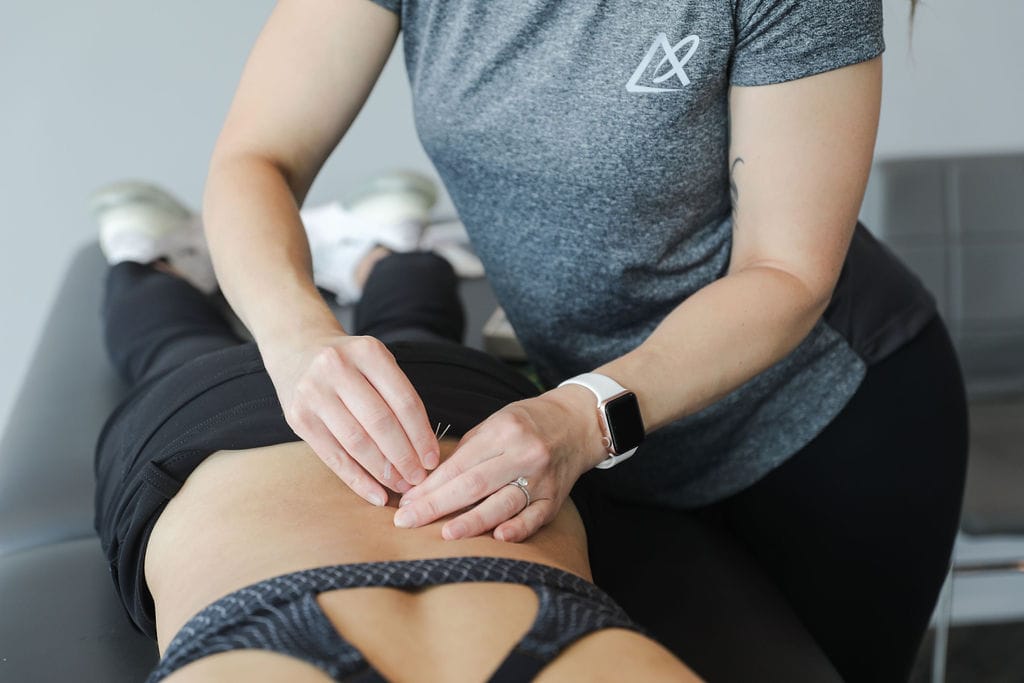
What are the causes of back pain?
Back pain can be caused due to various reasons like poor posture, overuse, or injury but many more causes can lead to back pain like inflammation and degenerative disc disease.
What are the common conditions of the back that the physiotherapists in Oakville can treat?
Some of the conditions most frequently treated by physiotherapists at our Physiotherapy Clinic in Oakville are:
- Sciatica
- Postural issues
- Degenerative Disc Disease
- Mechanical Back Pain
- Pregnancy-related back pain
- Disc Herniation
What type of treatments can help back pain?
At Triangle Physiotherapy Oakville, our physiotherapists use manual therapy, exercises, and pain management strategies to help with back pain. It is important to keep moving and staying active to avoid the recurrence of episodes.
Where can I find a physiotherapist in Oakville?
We have 8 locations with physiotherapists to help you.
- Pelvic Health Physiotherapy Etobicoke – Triangle Physiotherapy Etobicoke
- Oakville Pelvic Health – Triangle Physiotherapy Oakville
- Pelvic Health Physiotherapy North York – Triangle Physiotherapy North York
- Mississauga Pelvic Health – Triangle Physiotherapy Mississauga
- Downtown Pelvic Health – Triangle Physiotherapy King West
- Uptown Toronto Pelvic Health – Triangle Physiotherapy Lawrence Park
- Pelvic Physiotherapy Downtown Toronto – Triangle Physiotherapy Queens Quay
- Mississauga Pelvic Health – Triangle Physiotherapy Erin Mills
Our Oakville Physiotherapy Clinic is located only 2 lights West of Highway 403 on Dundas and 2 lights East of Trafalgar Road on Dundas.
“Effective back pain treatment is essential for improving your quality of life. Triangle Physiotherapy offers expert services across the GTA, including Physiotherapy in Etobicoke, Oakville, North York, Toronto, Lawrence Park, Queens Quay, Erin Mills, Mississauga, and Liberty Village. Our skilled physiotherapists are dedicated to helping you find relief from back pain and restore your mobility.”
If you are considering chiropractic care in Oakville and have looked through Google to find a doctor to help you you have likely found countless options. This is when it becomes challenging to pick the chiropractor that is best for YOU. The next question you have probably asked yourself is what makes one Oakville Chiropractor different from the next, or “How do I find the best chiropractor for me?”
While this can feel like a daunting task, there are a few things that can set one chiropractor apart from another. These tips will go a long way in helping you find the best chiropractor for you in Oakville, and as a result, lead to better results for your health.
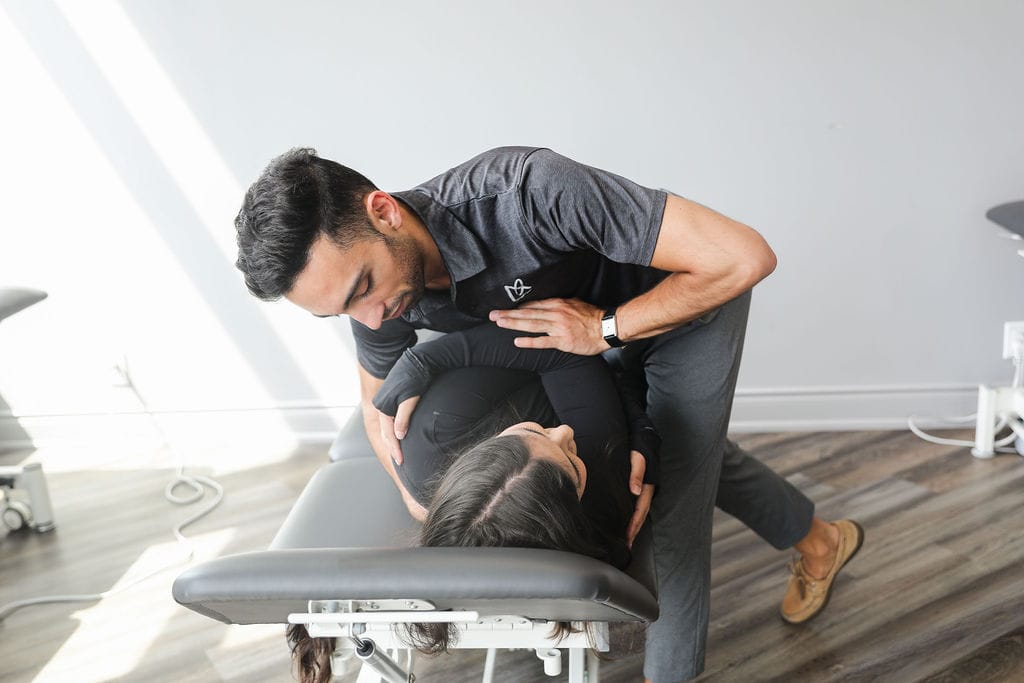
Tips for finding the best chiropractor in Oakville:
1. Start by asking trusted friends and relatives. Ask these people about their experiences with different chiropractors and who they would recommend to you. Referrals speak a lot about the practices of different chiropractic clinics.
2. Look up the online reviews for the clinics recommended to you or the ones you have looked up online during your search. Look for reviews on the chiropractor as well as the general customer service of the clinics.
3. Once you have narrowed your search, give the chosen clinic a call and ask for the chiropractor’s hours and availability to book an assessment and future follow-ups. This ensures that the timings match your availability.
4. When looking for a chiropractor many people don’t realize that there are several different techniques that they can use. The chiropractors at Triangle Physiotherapy are rehab-focused and their treatment style involves manual therapy, exercise prescription, and education.
When should I look into chiropractic care?
There are several reasons to seek chiropractic care. Back pain, neck pain, and headache are the most common reasons why patients first consult a chiropractor. Aside from these reasons, work, car accidents, sports injuries, household chores, and even the stress of daily living can cause painful joint and spinal problems. Remember, even if you do not have painful symptoms, chiropractic care can help you maintain a healthy spine and optimal joint function. Our chiropractors in Etobicoke, chiropractors in Mississauga, chiropractors in Oakville, and chiropractors in Toronto are skilled healthcare practitioners who can relieve your symptoms and get you back to doing what you love, pain-free.
What is a treatment session with a chiropractor like?
An initial visit with your Chiropractor usually involves a thorough history taking and assessment of your condition, in addition to an initial treatment to help set you on your road to recovery. Follow-up appointments will usually involve substantial manual treatment of your muscles and joints, as well as some therapeutic machines (e.g. Shockwave Therapy), acupuncture, and a home exercise program as needed. The Chiropractor may also recommend that you see a massage therapist to complement your treatment plan.
We hope this article has been helpful to you. While one chiropractor may be the best for one particular person you may find that another is the best for you. Doing your research can go a long way in the decision-making process.
If you have any further questions please feel free to contact our Oakville team today at Triangle Physiotherapy.
Our More Locations
Physiotherapy Etobicoke | Physiotherapy Oakville | Physiotherapy North York | Physiotherapy Toronto | Physiotherapy Lawrence Park | Physiotherapy Mississauga | Physiotherapy Queens Quay | Physiotherapy Mississauga Erin Mills | Physiotherapy Liberty Village
How do I book an appointment with a chiropractor near me?
Click HERE to book an appointment with a chiropractor at one of our eight locations.
- Chiropractor Etobicoke – Triangle Physiotherapy Etobicoke
- Oakville Chiropractic Clinic – Triangle Physiotherapy Oakville
- Chiropractic North York – Triangle Physiotherapy North York
- Mississauga Chiropractic Clinics – Triangle Physiotherapy Mississauga
- Downtown Chiropractic Clinics – Triangle Physiotherapy King West
- Uptown Chiropractic Clinics – Triangle Physiotherapy Lawrence Park
- Chiropractic Clinic Downtown Toronto – Triangle Physiotherapy Queens Quay
- Chiropractor Mississauga – Triangle Physiotherapy Erin Mills
Finding the right chiropractor in Oakville is essential for effective care and recovery. If you’re also considering physiotherapy for a holistic approach to your health, explore options for physiotherapy in Etobicoke, Oakville, North York, Toronto, Lawrence Park, Queens Quay, Erin Mills, Mississauga, or Liberty Village. Experienced physiotherapists in these areas can complement chiropractic care and help you achieve optimal wellness.
Chiropractic care focuses on the diagnosis and treatment of mechanical disorders of the musculoskeletal system, particularly the spine. Chiropractors use manual manipulation and other techniques to treat conditions such as back pain, neck pain, headaches, and other musculoskeletal issues. While chiropractic care may benefit some individuals, it’s essential to note that its effectiveness can vary from person to person, and it may not be suitable for everyone.
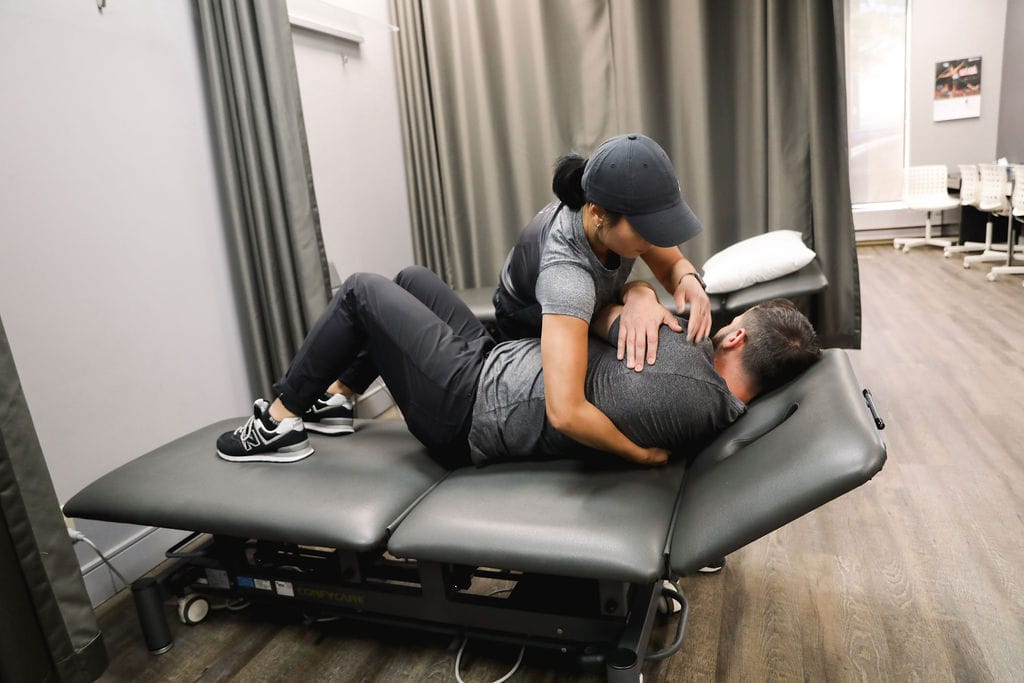
Here are some groups of people who may potentially benefit from chiropractic care:
- Individuals with Back Pain: Chiropractic care is often sought by people experiencing acute or chronic back pain. Spinal adjustments performed by chiropractors may help alleviate pain and improve mobility.
- Neck Pain Sufferers: Chiropractic adjustments may also be used to address neck pain, especially if it is related to issues with the cervical spine.
- Headache and Migraine Sufferers: Some people find relief from headaches and migraines through chiropractic care, particularly if the issues are related to tension or misalignments in the spine.
- Joint Pain and Mobility Issues: Chiropractors may work on various joints in the body, not just the spine. People with joint pain or mobility issues in the shoulders, hips, knees, or other joints may seek chiropractic care.
- Sports Injuries: Athletes often turn to chiropractors for the treatment of sports-related injuries. Chiropractic care may help with the recovery process and improve overall athletic performance.
- Pregnant Women: Some pregnant women seek chiropractic care to help manage musculoskeletal changes that occur during pregnancy. Chiropractors may use gentle techniques to address discomfort and pain.
- Postural Issues: Individuals with poor posture or those whose daily activities contribute to spinal misalignments may benefit from chiropractic adjustments to improve posture and prevent associated issues.
- Chronic Conditions: While chiropractic care is not a cure for chronic conditions, some individuals with conditions like osteoarthritis or fibromyalgia may find relief from certain symptoms through chiropractic treatments.
What is the treatment approach of the chiropractors at Triangle Physiotherapy?
The chiropractors at Triangle Physiotherapy have a rehab-focused approach to treatment. They believe in evidence-based treatment solutions are are able to carry forward the treatment plan proposed by your physiotherapist.
How do I book an appointment with a chiropractor near me?
Click HERE to book an appointment with a chiropractor at one of our eight locations.
- Chiropractor Etobicoke – Triangle Physiotherapy Etobicoke
- Oakville Chiropractic Clinic – Triangle Physiotherapy Oakville
- Chiropractic North York – Triangle Physiotherapy North York
- Mississauga Chiropractic Clinics – Triangle Physiotherapy Mississauga
- Downtown Chiropractic Clinics – Triangle Physiotherapy King West
- Uptown Chiropractic Clinics – Triangle Physiotherapy Lawrence Park
- Chiropractic Clinic Downtown Toronto – Triangle Physiotherapy Queens Quay
- Chiropractor Mississauga – Triangle Physiotherapy Erin Mills
Chiropractic care can benefit individuals dealing with back pain, joint issues, and overall mobility concerns, often working well in conjunction with physiotherapy. If you are looking for professional physiotherapy services to complement your chiropractic care, there are clinics in physiotherapy Etobicoke, Oakville, North York, Toronto, Lawrence Park, Queens Quay, Erin Mills, Mississauga, and Liberty Village. These locations offer comprehensive care and personalized treatment plans to help you achieve optimal health and wellness.
Back pain is one of the most common ailments we see in our practice.

Here are some self-care measures you can consider to manage or prevent recurrence:
- Rest: Give your back a break by avoiding activities that may exacerbate the pain. However, avoid prolonged bed rest, as it can lead to stiffness and muscle weakness. Gentle movement and stretching are usually better than complete immobility.
- Ice and Heat: Apply ice packs to the affected area for the first 48 hours to reduce inflammation, then switch to heat therapy (e.g., heating pads) to relax tight muscles. Use each for 15-20 minutes at a time.
- Over-the-Counter Pain Relief: Non-prescription pain relievers such as ibuprofen (Advil) or acetaminophen (Tylenol) can help alleviate pain and reduce inflammation. Follow the recommended dosage and consult a healthcare professional if you have concerns.
- Exercise: Gentle, low-impact exercises can help strengthen your back and improve flexibility. Activities like swimming, walking, or yoga can be beneficial. Consult a physical therapist for guidance on appropriate exercises.
- Posture: Maintain good posture when sitting and standing to reduce strain on your back. Use ergonomic chairs and accessories if needed, and avoid prolonged periods of sitting.
- Proper Lifting Technique: When lifting heavy objects, bend at your knees and hips instead of your waist, and use your legs to lift while keeping the object close to your body.
- Core Strengthening: Strengthening your core muscles (abdominals, obliques, and lower back) can provide better support for your spine. Pilates and specific core exercises can help with this.
- Sleep: Ensure you have a comfortable mattress and pillow that support your spine. Sleeping on your side with a pillow between your knees can help maintain proper alignment.
- Stress Reduction: Stress can contribute to muscle tension and pain. Techniques such as meditation, deep breathing exercises, and relaxation techniques may help manage stress.
- Weight Management: Maintaining a healthy weight can reduce the strain on your back and decrease the risk of back pain.
- Physiotherapy: A physical therapist can provide personalized exercises and techniques to address your specific back pain issues.
- Chiropractic Care or Massage Therapy: Some people find relief through chiropractic adjustments or therapeutic massages. Consult with professionals in these fields to see if it’s appropriate for your condition.
- Avoid Smoking: Smoking can impair blood flow to the spine and hinder the healing process.
If your back pain persists, worsens, or is accompanied by other concerning symptoms (such as numbness, tingling, weakness, or loss of bladder or bowel control), seek immediate medical attention. Always consult a healthcare provider before starting any new exercise or treatment regimen, especially if you have underlying health conditions or are taking medications. They can provide a more accurate diagnosis and recommend the best treatment options for your specific situation.
How do I book an appointment with a physiotherapist or chiropractor near me?
Click HERE to book an appointment with a physiotherapist or chiropractor at one of our eight locations.
- Physiotherapy Etobicoke – Triangle Physiotherapy Etobicoke
- Oakville Physiotherapy Clinic – Triangle Physiotherapy Oakville
- Physiotherapy North York – Triangle Physiotherapy North York
- Mississauga Physiotherapy Clinics – Triangle Physiotherapy Mississauga
- Downtown Physiotherapy Clinics – Triangle Physiotherapy King West
- Uptown Physiotherapy Clinics – Triangle Physiotherapy Lawrence Park
- Physiotherapy Clinic Downtown Toronto – Triangle Physiotherapy Queens Quay
- Physiotherapy Clinics Mississauga – Triangle Physiotherapy Erin Mills
“Relieving back pain requires a comprehensive approach that includes targeted physiotherapy. Triangle Physiotherapy offers expert services across the GTA, including Physiotherapy in Etobicoke, Oakville, North York, Toronto, Lawrence Park, Queens Quay, Erin Mills, Mississauga, and Liberty Village. Our experienced physiotherapists can help you find effective solutions to alleviate your back pain and improve your quality of life.”



